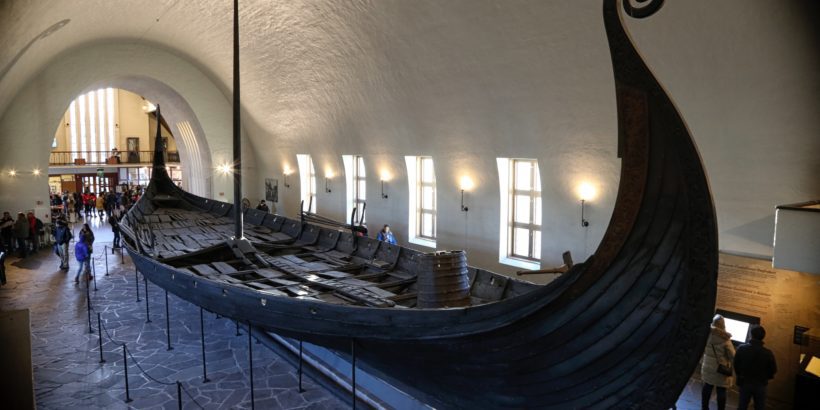The Vikings have a reputation for being ruthless plunderers but the image of the savage viking obscures the fact that the Vikings maintained a thriving society and made monumental advancements in maritime engineering, exploration, and trade. Luckily, at the Viking Ship Museum in Oslo, Norway, you can witness some of the achievements of this culture.
The Viking Ship Museum
The Viking Ship Museum is small and admittedly won’t take you very long to explore. It consists of four large corridors which house three viking ships on display (although one is not much more than a collection of scraps) along with a range of artifacts to check out. While there’s not a lot of depth to the exhibits here in terms of quantity, I still think it’s well worth a visit given how exceptional these few exhibits are.
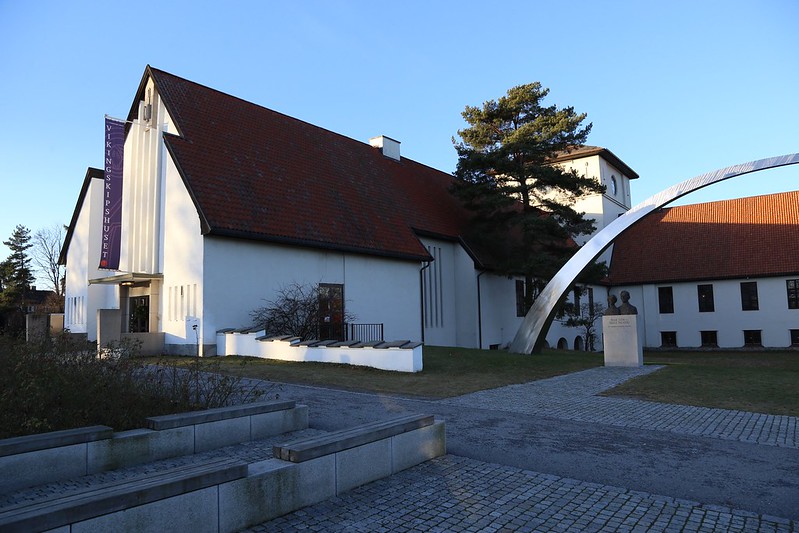
In my opinion, the major draw to the museum are the two viking ships: The Oseberg and the Gokstad. Both of these are exceptionally preserved ships from the Viking era.
The Viking Era extended from around 800 to 1050 AD and during this time the Vikings perfected building ships known as “long ships.” These were long wooden ships that utilized both oars and cloth sails. They were light ships built for speed and designed with a wide and shallow hull that was ideal for navigating shallow rivers but could also navigate the high seas. This gave the Vikings great flexibility when exploring or raiding villages, allowing them to quickly make their way inland even through shallow waters.
The ships were unrivaled for centuries and allowed the Vikings to flourish in both battle and trade until the arrival of the “cog vessel” which were taller and more robust boats that eventually outlasted the long ship.
The first viking ship that you’ll encounter when you enter the museum is the beautiful Oseberg ship. On 8 August 1903, a farmer named Oskar Rom discovered ship remains and notified archaeologist Gabriel Gustafson. Gustafson quickly realized these were the remains from the Viking era and excavation of the ship remains began as soon as practically possible.

The excavation became a bit of spectacle and although the excavation work took only three months, it took 21 years to restore the ship. Today over 90 per cent of the reconstructed Oseberg ship consists of the original timber.
If you’re like me, when you first enter the museum, you’ll be struck by the size of the ship. It’s quite an imposing sight.
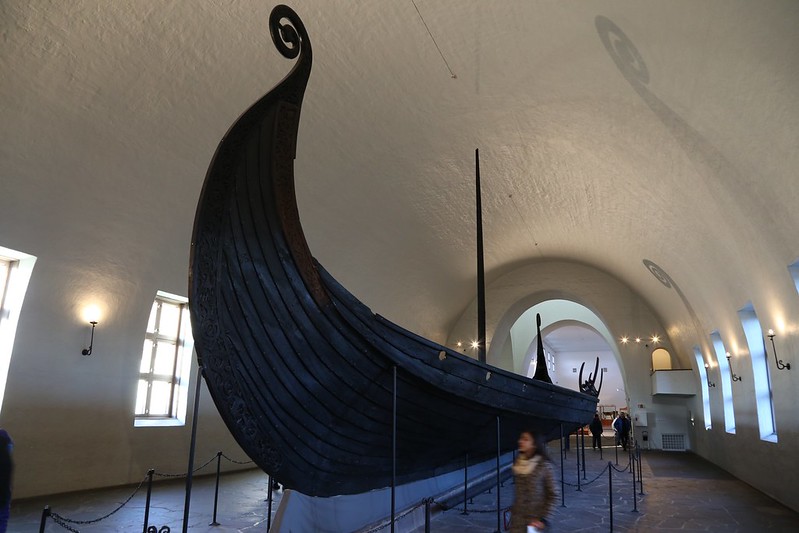
Each ship is set in the middle of each corridor, so yo can get a full 360º view of the ship as you walk around the exhibit.
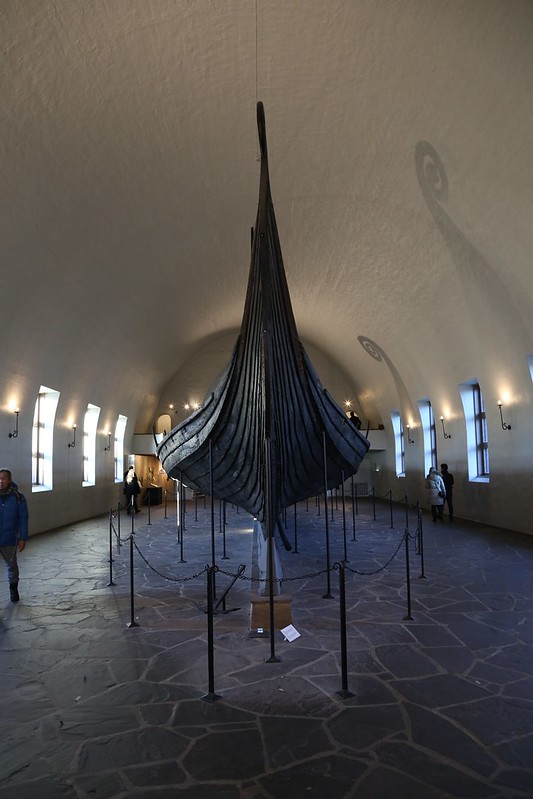
The ship was much larger than I’d envisioned. To better appreciate the scale of the ships, step into the viewing balconies and take a view from a higher perspective, where you’ll also be able to look inside the deck.

You’ll be able to clearly see the planks that make up the deck. In many ships, these were removable which made it easy to store food and cargo beneath them.

In addition to the size of the ship, the carvings made on the ship are beautiful. Both the prow and stern are carved with intricate animal ornamentation, which ends in a spiraling “serpent’s head.” The Museum states that “such an ornately decorated ship has undoubtedly been reserved for special members of the aristocracy.”
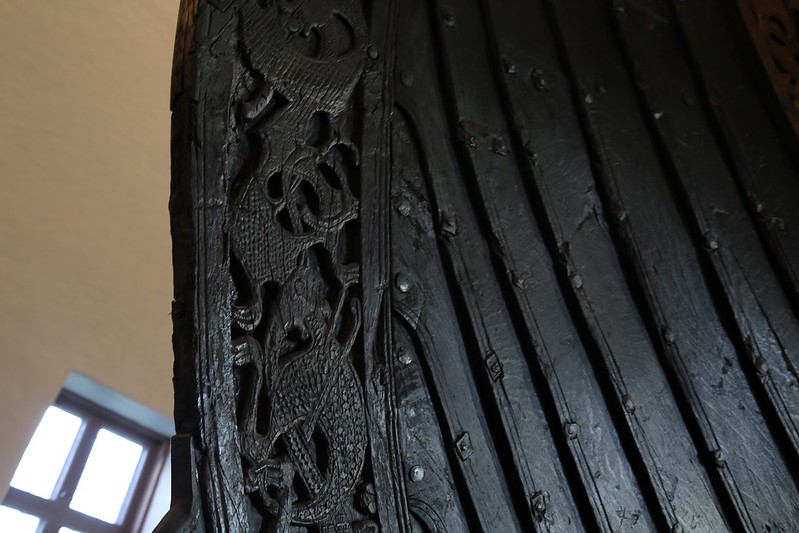
It’s really hard to get over the level of detail found on these ships.
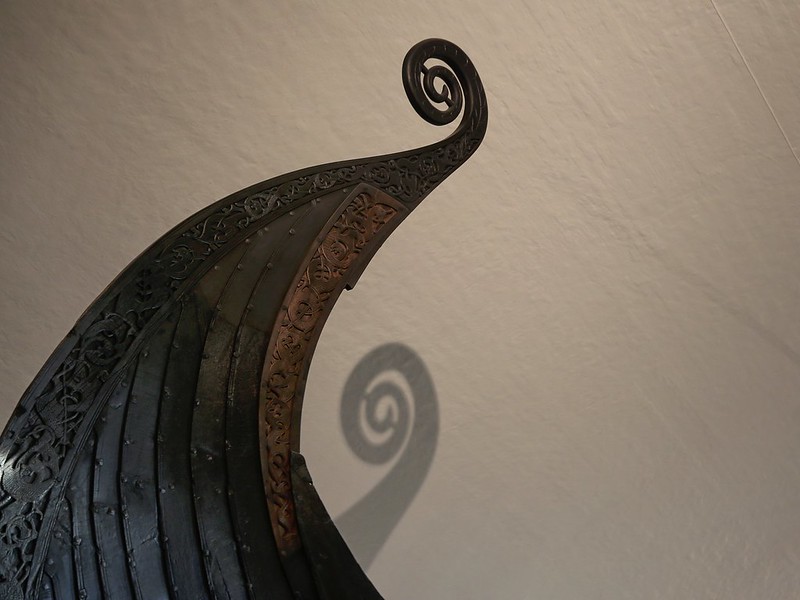
The closer you inspect the ship, the more you realize that this was just as much a work of art as it was an exceptional vessel.

Although these ships are beautiful, they’re also a bit eerie to me. I can only imagine the horror that so many people felt as they saw these giant serpent heads appearing over the horizon and heading right towards their village.
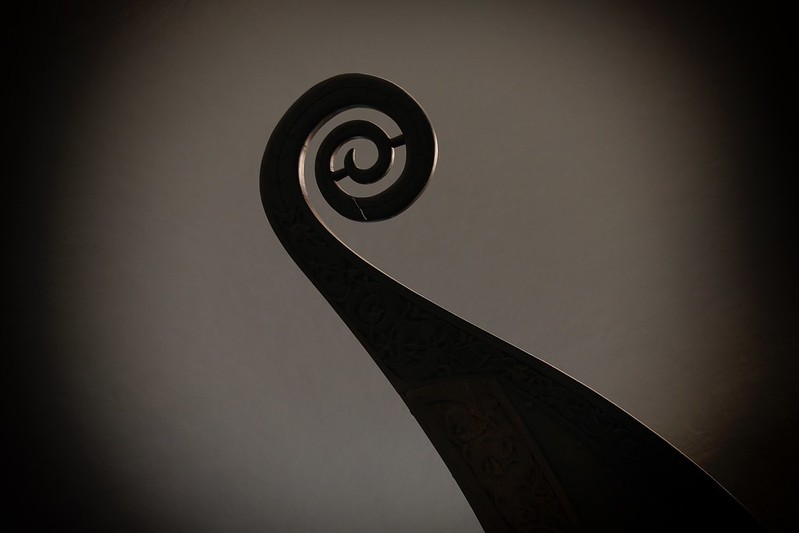
There are 15 oar holes on each side so the ship could have had 30 oarsmen in addition to a helmsman and a lookout. The oars on display were made of pine and even showed traces of painted decorations. Since they don’t show any signs of wear, it’s thought that the oars were specifically placed there for burial purposes.
While the oars are made of pine, the ship was made with oak, around the year 820. Each of the 12 wooden planks (or “strakes”) on either side overlaps the one below and they are fixed into place with iron rivets.
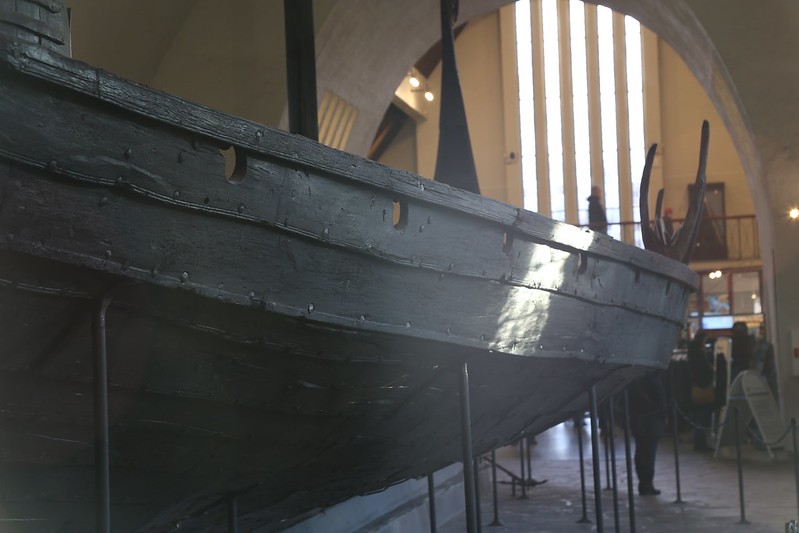
Two women were buried with the Oseberg. Although there’ still a lot of mystery surrounding who they were, it’s clear they held high importance in society. Not only were they buried with this intricately decorated ship, their graves also were filled with other items including:
- Clothes, shoes and combs
- Ship’s equipment
- Kitchen utensils
- Farm tools
- Three ornate sleighs and a working sleigh
- A cart
- Five carved animal heads
- Five beds
- Two tents.
- Fifteen horses
- Six dogs
- Two small cows
Some of these artifacts are found in the museum. Most notably, is the Oseberg cart.

Even before it was buried, the cart was already old and it’s thought that it was possibly built before 800. The back of the cart is decorated with cats, which some believe was inspired by the cats that drew the cart of Frøya, the goddess of fertility. The front of the cart depicts a man being attacked by serpent, which could be an reference to the tale of Gunnar in the snake pit, another familiar story for the Vikings.
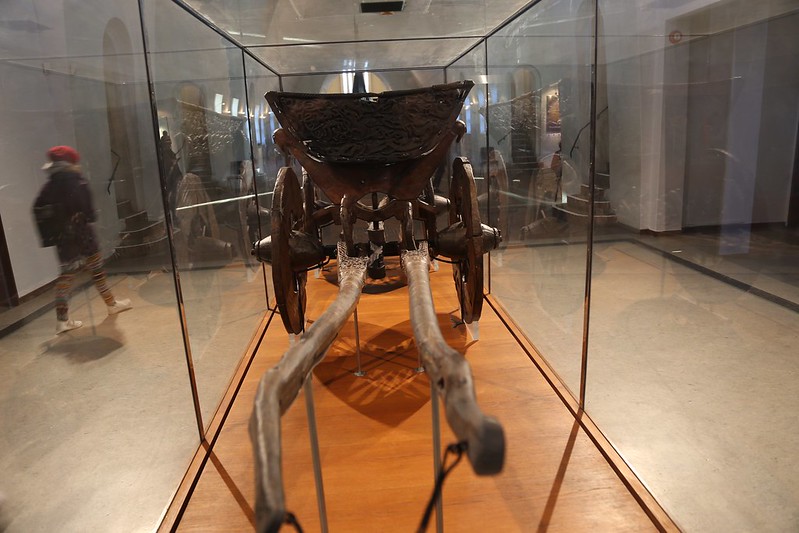
Other interesting artifacts include the carvings and tools which are on display. The animal heads on display show incredible detail that must have only been done by some of the most skilled carvers at the time. It’s not 100% clear what they were used for, but they clearly evince the artistry that we typically don’t associate with the Vikings.

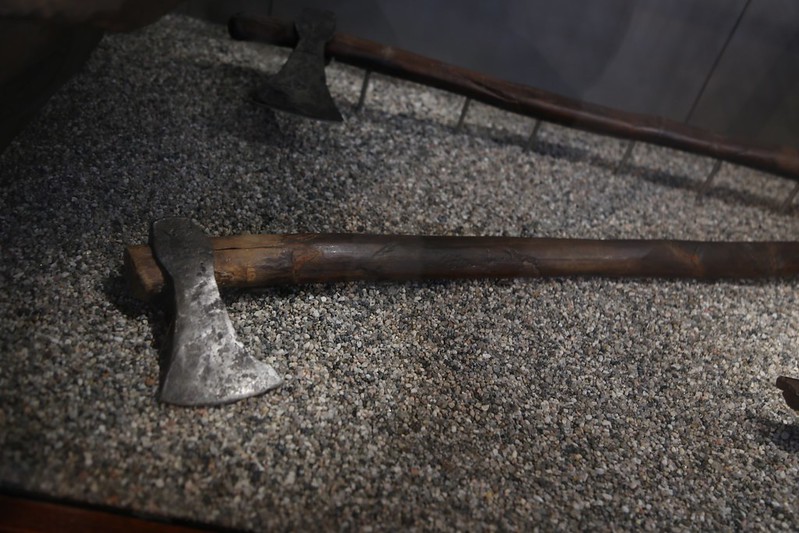
The other major attraction at the Viking Ship Museum in Oslo is the Gokstad. This ship was also discovered on a farm. In the fall of 1879 two teenage sons were apparently trying to pass time on a farm and decided to just start digging into a mound known as the “King’s Mound” to see if they could find anything exciting and… well, they discovered a viking ship.
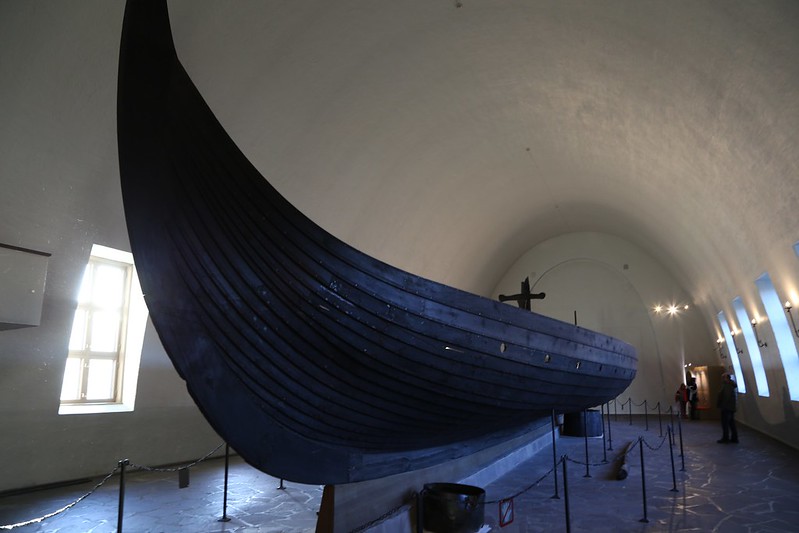
The Gokstad ship — known as the world’s best preserved viking ship — was built around 890 AD, at the height of the Viking period. This was a fast and maneuverable ship that could sail at over 12 knots and suited for voyages taken out on the high seas.The ship is made of oak, and is 5.18 m wide and 23.22 m long and even larger that the Oseberg.
For me, it’s amazing to look closely at these ships. There something about seeing the fine details in everyday ancient objects like iron rivets that fascinates me. To know that you’re looking at piece of metal work that some unnamed viking pounded out over 1,000 years ago is pretty cool. It’s also just mind-blowing to see the state of preservation of these ships close up.
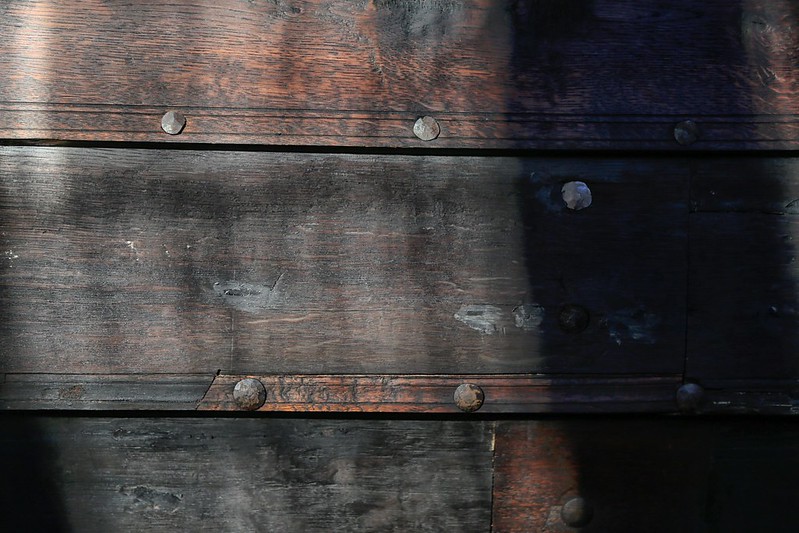
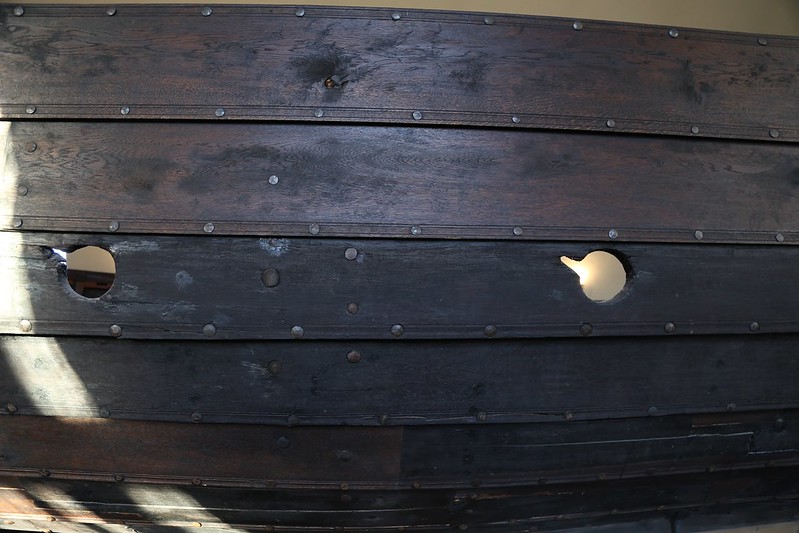
There are also some of the smaller boats on display, too. I believe that these were also found at the burial mounds along with the larger ships.
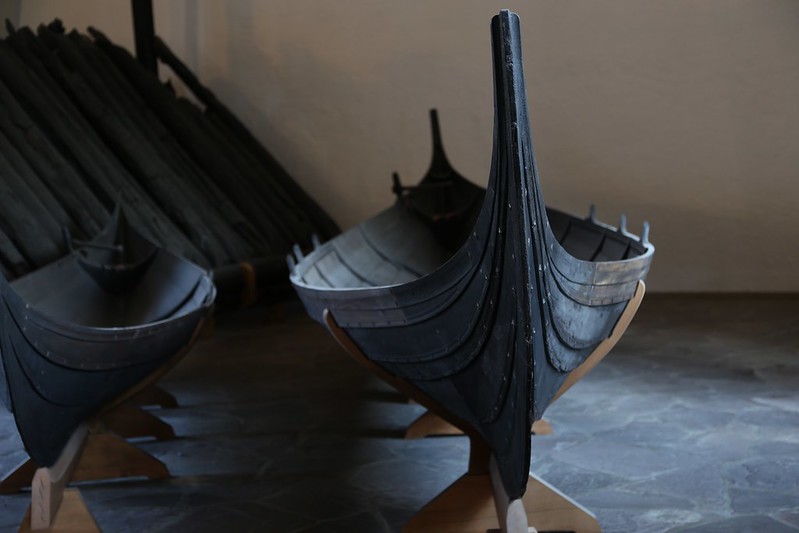

There’a s number of other artifacts to check out but in an effort to not spoil everything for readers, I don’t like to include everything.
Once you’re finally through with all of the amazing historical stuff, head back up to the front where you’ll find a small gift shop.
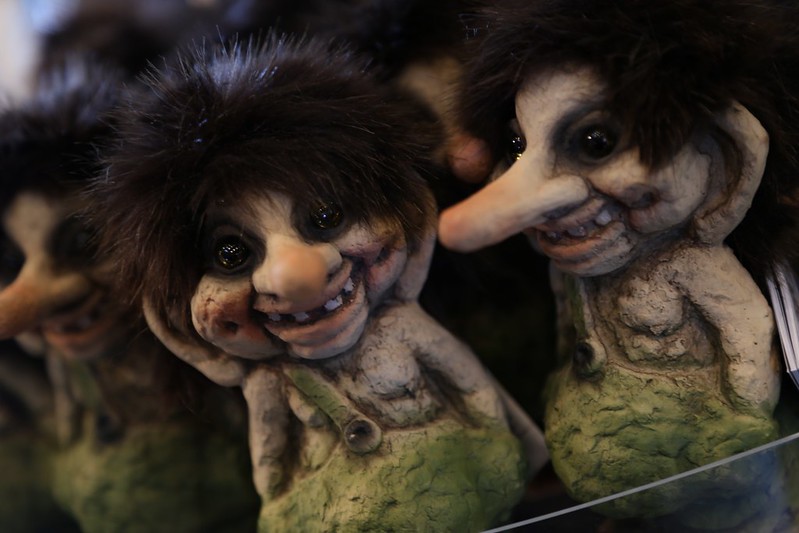
Getting to the Viking Ship Museum in Norway
Although the Viking Ship Museum is not in the heart of Oslo, it’s relatively easy to get to. We took the bus to the museum and it was only a few stops out of the way. From the city center you’ll take a bus (number 30) to the Vikingskipene Station, which is just like a minute away from the museum. You can read more about directions on how to get there here.
The Museum operated with the following hours:
- 1 May – 30 September 09:00 – 18:00
- 1 October – 30 April 10:00 – 16:00
Tickets for adults are 100NOK, which is about $12 USD, which is easily worth it if you ask me.
Also, consider getting an Oslo city pass here that covers entry into many museums and also covers public transportation. Olso is packed with fantastic museums like the National Gallery, the Norwegian Folk Museum, the Nobel Peace Center, and many more.
Final word
The Viking Ship Museum in Oslo, Norway, is a bit small and it doesn’t offer you floors upon floors of exhibits like you might find at a larger museum. But the main exhibits found here are as fascinating as can be. Getting up close to these viking ships was one of the coolest things I did while in Oslo, and I definitely think this museum is worth a visit.
Daniel Gillaspia is the Founder of UponArriving.com and the credit card app, WalletFlo. He is a former attorney turned travel expert covering destinations along with TSA, airline, and hotel policies. Since 2014, his content has been featured in publications such as National Geographic, Smithsonian Magazine, and CNBC. Read my bio.

